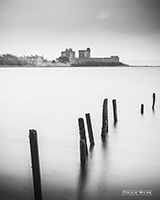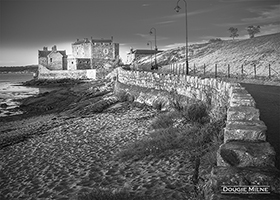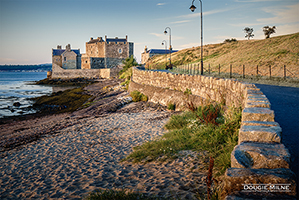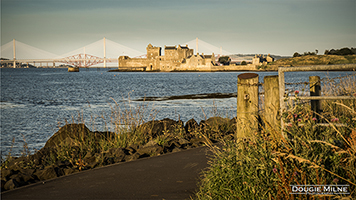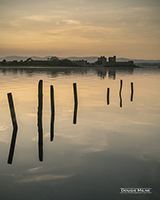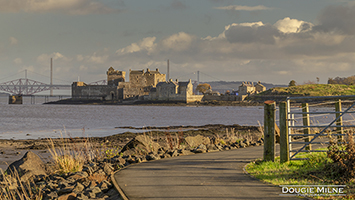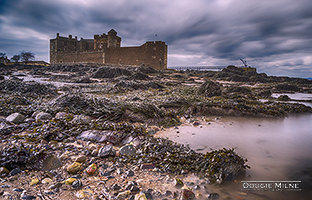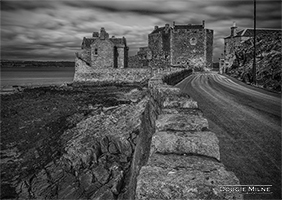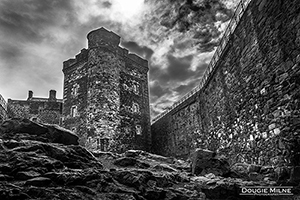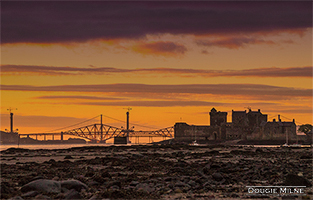Blackness Castle Wall Art
Blackness Castle, jutting out into the Forth on its headland, is known as "The Ship That Never Sailed". The central tower of the castle is often called the "main mast", while the north and south towers are named the "stem" and the "stern". These days, Blackness is a quiet little village, but a few centuries ago, it was the one of the most important ports in Scotland, second only to Leith The site of the Castle is perfect for defence, and it is likely that it has been occupied since Roman times, when Roman galleys berthed in Blackness Bay providing supplies for the soldiers of the Antonine Wall, which began at Carriden, a few miles from here. It is likely that the castle was built in the 1440's by Sir George Crichton, Lord High Admiral of Scotland and Sheriff of Linlithgow, following the destruction of his tower at Barnton in Edinburgh in 1444. During the sixteenth and seventeenth centuries, Blackness was used as a prison, holding mainly religious prisoners, including many Covenanters, in its dungeons, which flooded with each high tide in a primitive means of sanitation. In 1650, the castle was besieged and eventually taken by Oliver Cromwell and his troops. During their occupancy, some munitions exploded, blasting a huge hole in the battlements and, according to legend, leading to the appearance of the Devil. The castle became a prison again between 1759 and 1815, holding French prisoners of war from conflicts such as the Seven Years' and Napoleonic Wars. It became the central ammunition depot for Scotland in 1870. A pier was built to allow munitions ships to berth, and a miniature railway ran along it, carrying the explosives into the castle. The castle remained in use until the end of the First World War. It is now in the care of Historic Scotland and is a Scheduled Ancient Monument. It is another Outlander location, in which it doubles for the now long demolished Fort William. The courtyard was the location of the infamous flogging scene.

